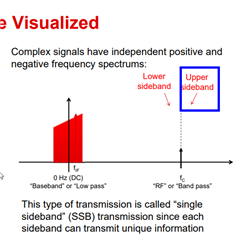Hello E2E,
For the TRF370417 modulator, does the in-phase LO lead or lag the quadrature LO? Is there a universally accepted convention for this and what are the implications of the transmitter and receiver using opposite relationships?
Regards,
Carlo
-
Ask a related question
What is a related question?A related question is a question created from another question. When the related question is created, it will be automatically linked to the original question.


